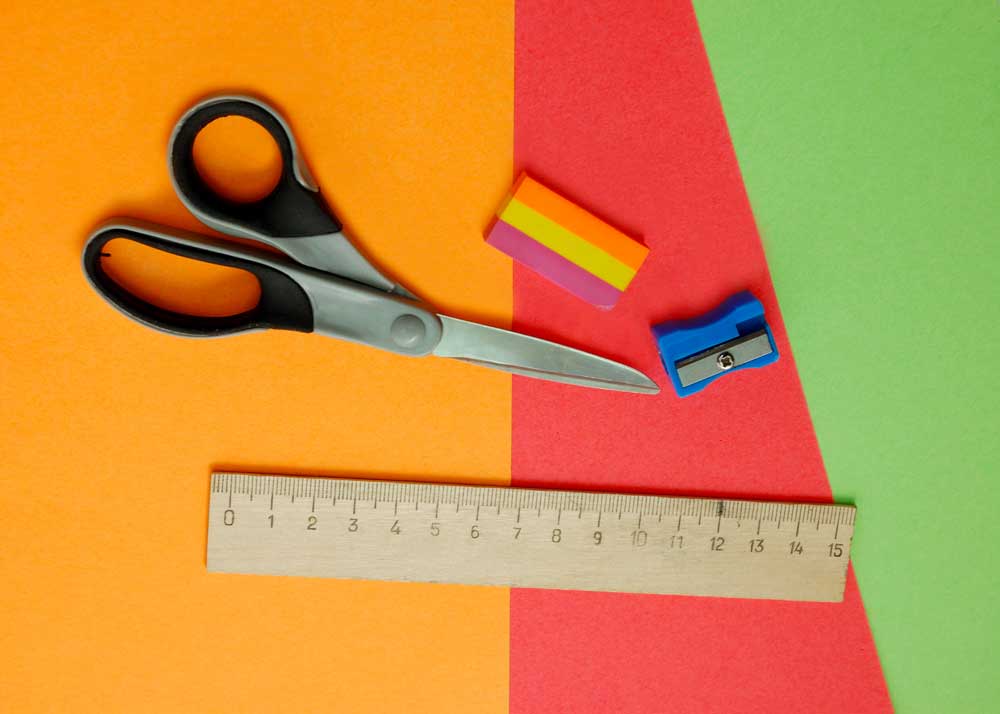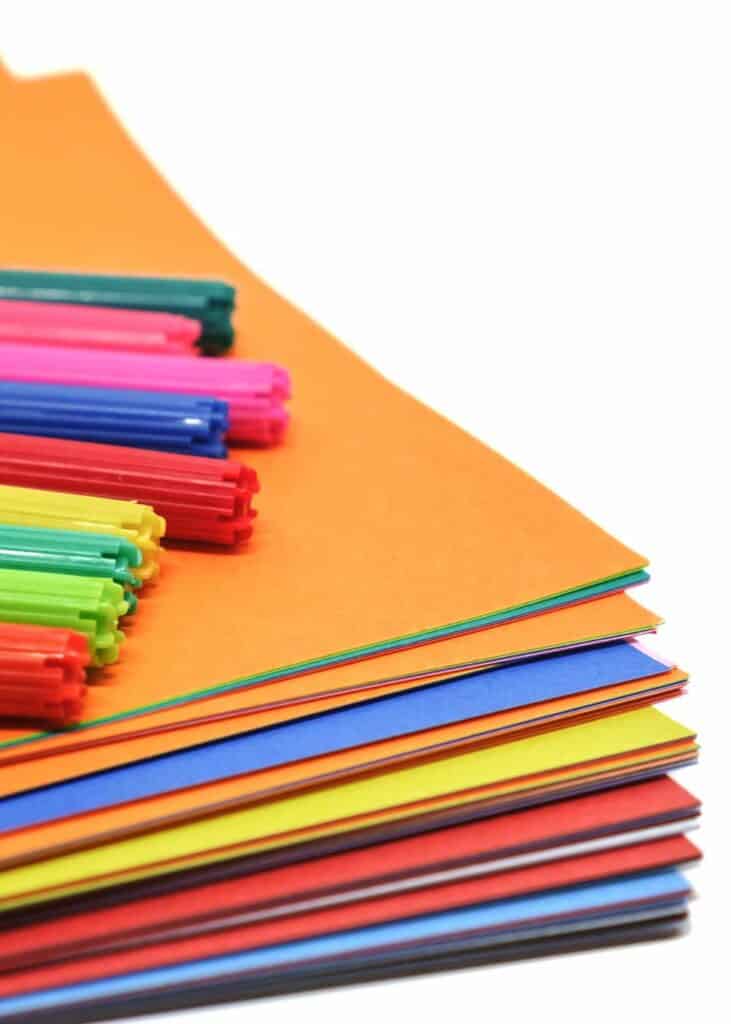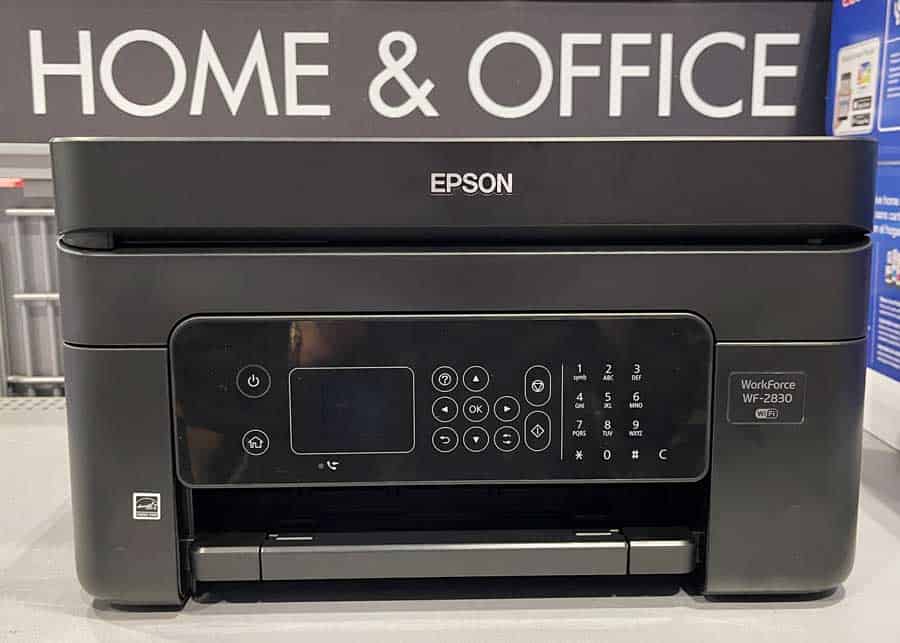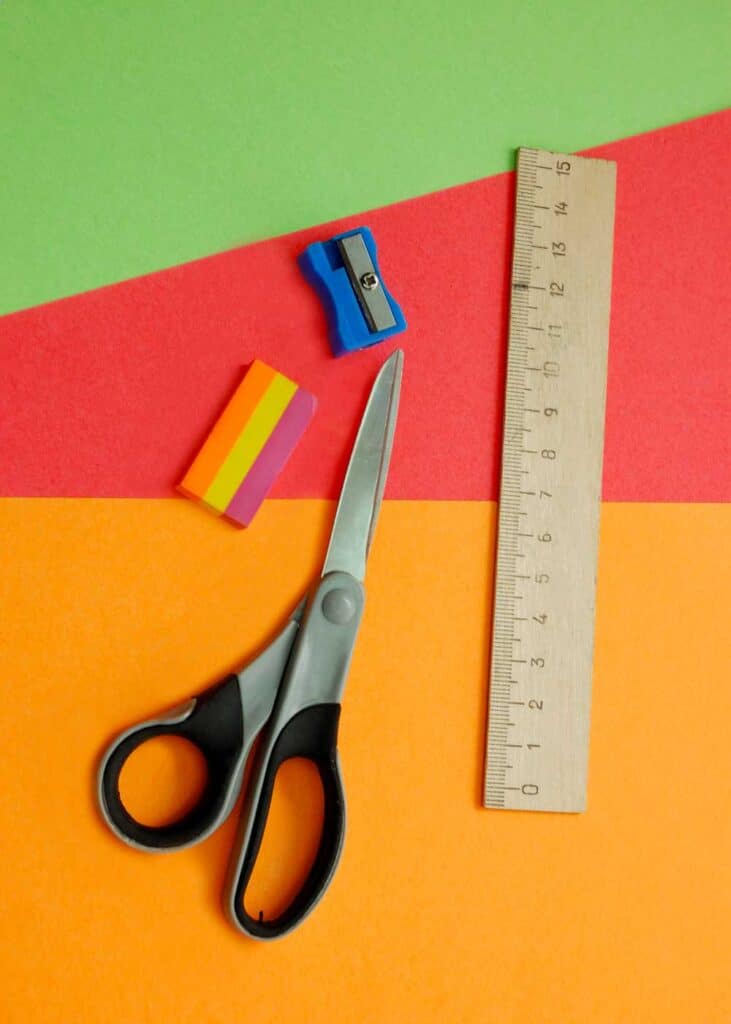Different paper textures and weights will affect your printed results for anyone looking at being more creative. Can you put construction paper in a printer? The answer will depend on the type of printer and the style of paper material.
It is possible to print on construction paper. Before you put construction paper in your printer, consider these 5 factors: material, size, thickness, drying time, and type of printer. The 2 primary factors are size (construction paper will need to be trimmed) and cardstock setting on your printer.

Now, you can successfully print without damage to the material or printer, leaving you with a product you want.
Printing on Construction Paper: 5 Factors
There are some challenges to using this alternative material for printing.
The elements of construction paper that can create problems for a printer include:
- Material
- Size
- Weight or thickness
- Drying time
- Style of printer

1. Material
Construction paper consists of wood pulp, giving it a rough texture and making it heavier than standard printer paper.
Depending on the type and style of construction paper you choose, some brands will be thicker than others and more suitable for moving through a printer.
Its texture can be hard to move through rollers effectively or leave fine paper fibers behind after printing.
Often, construction paper may slip or not move at all going through the printing process if your printer cannot handle this material.
2. Size
Typical construction paper doesn’t follow the dimensions of regular printer paper. When comparing the two products, construction paper usually measures 9×12 inches, making it too large for at-home printers that require 8.5×11 paper choices.
While some printers allow oversized paper options, this is not an average feature. Printers that can accommodate longer and broader pages will often cost more money and are not economical for many home printers or classrooms.
So, you will most likely have to cut some material off the sides to fit correctly to use in your printer.
Workaround: With a bit of looking, you might find some construction-like paper that is the right size and thickness for all printers. This pack by Astrobrights is just 24 lb weight and comes in 8.5″ x 11″ – the standard paper dimensions.
It isn’t traditional construction paper – but it’s bright, printable, and doesn’t have to be trimmed down. It might be worth considering.
3. Weight or Thickness
Construction paper will come in various thicknesses, so you must examine how thick it is and what your printer can handle.
Many inkjet and laser printers will have a heavyweight paper option to accommodate alternative products. The setting might also be called Cardstock or Heavy Setting.
And some construction paper lists as lightweight – like this large pack. While it doesn’t have the typical heaviness of
Examine your machine’s features to find any existing options to adjust the paper thickness. Typically, inkjet printers are more accommodating for various products than laser printers are.
Although, that does not mean your laser model cannot handle construction paper, just that those models are not as popular or available for home use.
Thickness of Construction Paper
How thick is a piece of construction paper? Paper, including construction paper, is usually sold by weight, not thickness.
Crayola construction paper is 0.00665″ thick with a +/- 0.0002″ according to Crayola Consumer Care (Question Section). This comes in just under 0.007″ and is considered a lighter-weight construction paper.
Here is the more traditional way to gauge construction paper.
- Construction Paper: 90-110 lb (180-260 gsm). Other papers in this weight include drawing paper, bristol board, and card stock.
- Standard Printer Paper: 20-32 lb (90-100 gms).
GSM: Grams per square meter, a unit of measurement.

4. Drying Time
If your printer can handle thicker materials like construction paper, also consider the fact that it will take some time to dry after printing. Unlike traditional printer paper, the ink can remain wet longer, causing smudging or smears if you handle it too soon after printing.
This sogginess is because construction paper is more fibrous and acts like a sponge to the liquid ink.
You do not want to stack multiple pages of construction paper together right after printing, either. This could create ink transferring between pages, making your documents look unsightly or messy.
Taking extra care after printing can be time-consuming if you print a large quantity of construction paper. Be sure you have ample space to place finished documents so they can dry.
If you touch the paper too soon, you’ll get ink on your hands. Here’s how to get it off.
5. Style of Printer: Inkjet, Laser, Copier Machines
The style and type of printer you have will determine how well you can use construction paper or not.
The two main popular at-home printer types are inkjets and laser models, which each have their own pros and cons for alternative paper materials.
Inkjet printers can handle various materials without much trouble, including lightweight construction paper. As long as you adjust the paper thickness option in your printer settings, trim it down to size, and handle it carefully, you should have optimal results.
Laser printers are specialized to handle a large volume of text printing. Because of this element, many models do not allow for adjustments in paper thickness to accommodate alternative materials such as construction paper or cardstock. Using items like construction paper or cardstock can create a paper jam and even cause damage to the printer’s internal components.
Likewise, construction paper is not made for use in copier machines. This material can leave tiny fibers that become stuck inside the rollers and components, creating jams and other problems while simultaneously lowering print quality.
Choosing paper stock carefully can prevent paper jams – and putting your printer in error state.

Cardstock Vs. Construction Paper in a Printer
Is construction paper is the same as cardstock materials since they are both thicker and require additional care for printing?
Each is different and will require specific attention when used in a printer.
Cardstock paper can be thicker and will have a smoother finish than regular construction paper. It is a higher quality product and typically costs more.
Cardstock material can be more challenging to print on, primarily when using an inkjet printer that mostly handles lightweight materials.
It is also available in both coated and uncoated options, which can potentially increase the difficulties of home printing. If you require cardstock for your printer, you should choose uncoated, which will be similar to construction paper in the material.
Home-use inkjet printers can be prone to jamming when using thick cardstock materials but can handle some thinner construction paper options.

The Takeaway
When looking at the thickness of construction paper and its ability to be used in a home printer, various factors will come into play as to whether it is suitable for your needs. With a standard inkjet model and regular construction paper, you should be fine to use this material without problems.
Many construction paper products will be slightly thicker than standard printer paper, making them suitable for many inkjet printers. Although you can find thicker materials similar to cardstock, you should check with your printer’s manual before using them. You do not want to cause a paper jam or damage any interior components. Here’s how to fix a printer jam.
Be sure to adjust your printer settings before using construction paper and handle each item carefully after printing to avoid touching the ink until it dries completely. Alternatively, do not forget to adjust your paper settings before switching back to standard paper afterward.
Have a tip or question? Let me know below!
Dena Haines is a co-founder and writer on PrintLikeThis. We troubleshoot printer problems to get you back to printing.
She also writes at Storyteller Tech and is a travel blogger at Storyteller.Travel. Dena is co-founder of Storyteller Media, a company he started with her husband, Bryan.



